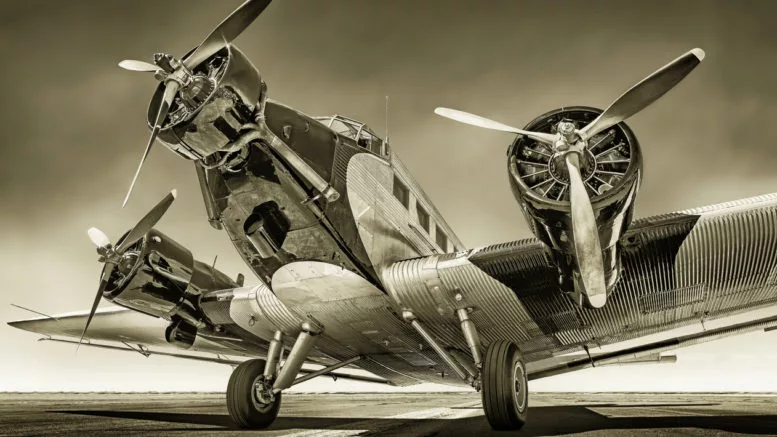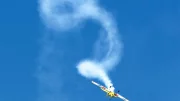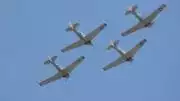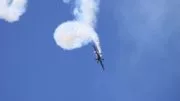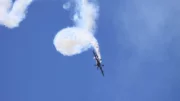A stunt pilot can pull off some impressive air feats and tricks. Today we break some of these high-flying spectacles down…
Introduction
Of the top impressive maneuvers performed by stunt pilots, you will find loops and barrel rolls. It is an open secret that even in the most intense aerobatics in the air, most planes are still subject to aerodynamics. The air that flows over the wings of airplanes gives them the needed lift to control their movement while staying aloft as they alter the surfaces that air flows over. Then, some jets can leave all the surfaces they fly over in the dust.
Super maneuverability
One important quality that makes some jets distinct from others is called supermaneuverability. This quality makes them exceed the average attitude control made possible by pure aerodynamic maneuverability. These jets are powerful enough for a pilot to fly without resting solely on aerodynamics. With these jets, pilots can pull off stunts while in control under conditions that would leave other aircraft plummeting without hope toward the ground. These incredible stunts can be achieved in several ways, one of which is Thrust vectoring.
Thrust vectoring
This term is also referred to as thrust vector control. An aircraft can manipulate its direction of thrust from the plane engine to control its angular velocity. Jets that can achieve their stunts through thrust vectoring don’t rely on airflow. They apply thrust vectoring to turn themselves around and change the direction their planes are pointed. Thrust vectoring isn’t enough to achieve this stunt. The thrust-to-weight ratio also plays an essential part in performing the maneuvers.
Thrust to weight ratio
If the thrust to weight ratio is more significant than one, the plane’s thrust can ultimately act in opposition. Not every pilot can salvage this situation, but some can course through by flooring it. This way, they still gain control of the plane, although it has stalled. There is also the possibility of maneuvers when you intentionally stall. Precise aerial control of the plane by the pilot makes up the whole ability to maneuver. While there are no hard and fast rules as to whether a plane has super maneuverability, there are numbers of jet planes, majorly Russian, that can live up to being super maneuverable.
Below are some of the most Incredible Maneuvers Performed by a Stunt Pilot in History
Pugachev’s Cobra
The pugachev’s cobra was first performed in 1989 by a soviet pilot, Viktor Pugachoyov. The incredible stunt that would later be christened “Pugachev’s Cobra” is one major leap to herald many more complicated super maneuvers. While in flight, the pilot retreats to a contradictory angle of attack, which takes the nose of the aircraft to a completely vertical position or even beyond. After the retreat, one of these two is likely to happen. If a plane lacks thrust vectoring but has a thrust-to-weight ratio higher than 1, you can use the drag in the direction of the plane’s tail to pitch the nose forward again.
If the plane has thrust vectoring, it will help you in its reorientation much more. Either way, the engines would fire hard enough the whole time to ensure the jet’s altitude is maintained even though it loses speed or lifts. The pugachev’s cobra is quite an impressive trick, although questionably useful. This is because the swift loss of momentum can be employed if there’s a high-speed pursuer to make them overshoot you. This leaves the jet that pulled the cobra stunt in a vulnerable state. This stunt is performed chiefly during airshows, as you can hardly use it in actual combat.
The Herbst Maneuver
This maneuver was first performed in 1993 by a German test pilot, Karl-Heinz Lang. It is very much like Pugachev’s Cobra but has a twist to it. While you’ll pull up and go forward to perform the Pugachev’s Cobra, the Herbst Maneuver involves you rolling the plane a bit with its nose pointed at the sky. When the nose comes back down, the plane has changed course. While watching a video of the stunt performed in the experimental X-31 plane, it may be tough to get the hang of it. You can check out the F-22 Raptor pulling it off.
The Herbst Maneuver makes room for you to turn within a bit time frame while maintaining an extremely high attack angle in its comeback. It expends a high amount of potential energy and speed. Unlike the Cobra, you can pull this stunt in actual combat, not just during airshows.
The Kulbit
This particular maneuver from the Russian for somersault is also like a parody of Pugachev’s Cobra, but it is turned into a backflip. It can be an extremely tight sequence. These custom sequences have a wide radius to see the plane experience lift from the air that flows over its wings. Yes, wings still work even when the plane is turned upside down. For a Kulbit, the radius of the sequence is too tight that it can’t keep flying according to custom, so you get the jet to stall and tumble back over itself. It is also referred to as “Frolov’s Chakra,” as it was first performed by the Russian test pilot, Yevgeni Frolov. If you have gained mastery of the stunt, you can go for a second Kulbit right after pulling the first.
The Tailslide
This maneuver can also be likened to a Pugachev’s Cobra that isn’t in a hurry. To perform this stunt, you pull up as you would while performing the Pugachev’s Cobra but wouldn’t pitch forward. You stall a little while before pitching forward to recover. If the jet plane has a high thrust-to-weight ratio, its engines can permit a hovering stall-out at an angle near vertical for a long time. When it is time to end the stunt, you get the jet to fall in a forward motion to a steep dive and transit back to aerodynamic flight. While this is a somewhat difficult trick, and it requires complete post-stall control, it isn’t a trick that is limited to supermaneuverable jets.
All-inclusive
The primary things that make up a buildup of supermaneuverability are intriguing to watch one after the other. Still, it gets more intense when you watch all the stunts together as a pilot transitions from one to the other. This maneuver is a demo pulled at the 2013 Paris airshow. A Sukhoi Su-35 happened to pull a lot of post-stall stunts and super impressive maneuvers in a string-like manner in quick succession.
Wrapping Up Stunt Pilot Maneuvers
While watching, you can hardly tell where a stunt starts and ends. As you look closely, you would be able to spot bits of one and pieces of another to create moves twisted into a whole inconsistent turn of events.
Check Us Out!
Ready to Soar with Us?

